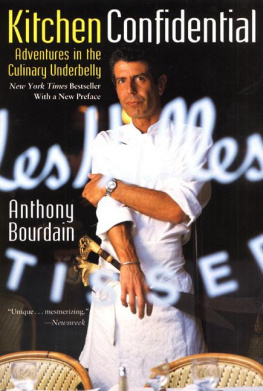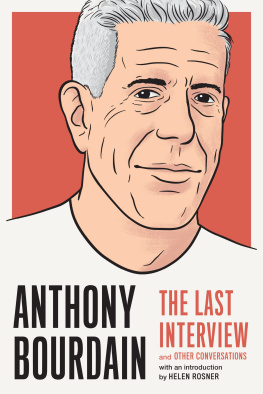Weiland Matt - State by State A Panoramic Portrait of America
Here you can read online Weiland Matt - State by State A Panoramic Portrait of America full text of the book (entire story) in english for free. Download pdf and epub, get meaning, cover and reviews about this ebook. year: 2008;2014, publisher: HarperCollins e-Books, genre: Detective and thriller. Description of the work, (preface) as well as reviews are available. Best literature library LitArk.com created for fans of good reading and offers a wide selection of genres:
Romance novel
Science fiction
Adventure
Detective
Science
History
Home and family
Prose
Art
Politics
Computer
Non-fiction
Religion
Business
Children
Humor
Choose a favorite category and find really read worthwhile books. Enjoy immersion in the world of imagination, feel the emotions of the characters or learn something new for yourself, make an fascinating discovery.

- Book:State by State A Panoramic Portrait of America
- Author:
- Publisher:HarperCollins e-Books
- Genre:
- Year:2008;2014
- Rating:5 / 5
- Favourites:Add to favourites
- Your mark:
- 100
- 1
- 2
- 3
- 4
- 5
State by State A Panoramic Portrait of America: summary, description and annotation
We offer to read an annotation, description, summary or preface (depends on what the author of the book "State by State A Panoramic Portrait of America" wrote himself). If you haven't found the necessary information about the book — write in the comments, we will try to find it.
State by State A Panoramic Portrait of America — read online for free the complete book (whole text) full work
Below is the text of the book, divided by pages. System saving the place of the last page read, allows you to conveniently read the book "State by State A Panoramic Portrait of America" online for free, without having to search again every time where you left off. Put a bookmark, and you can go to the page where you finished reading at any time.
Font size:
Interval:
Bookmark:
STATE
BY
STATE
A PANORAMIC PORTRAIT
OF AMERICA
EDITED BY
Matt Weiland & Sean Wilsey

Matt Weiland
This book started with a hunch and a conviction. The conviction was the easy part: that despite drive-time radio and the nightly news and the Sunday paper, despite all the books and blog posts, the documentaries and songs, America and the lives lived here remain strangely and surprisingly underdescribed. So many mirrors and yet we know ourselves so poorly! Often it takes a tragedy to remind us so: when residents of the Lower Ninth Ward in New Orleans stand dazed on their rooftops wondering why the flood water came so fast and the drinking water so slow; when coal miners are rescued in West Virginia or entombed in Utah; when the lives of cleaners and brokers, accountants and firemen are memorialized after September 11who hasnt marvelled at the richness of lives we dont know?
The same is true of the landscape and the past weve lived across it. The topography and climate of America may be the richest in the world, yet what ends up on the page so rarely seems to capture its dynamism, its variety, its intensity. Sure, the deepest canyons and the wettest waterfalls and the curviest roads make cameos in ads for automobiles and soda pop and life insurance; and plenty of stories, fictional and true, are set in the streets and skylines of our principal cities. But what about everywhere else: the half-dead towns too alive to be ghosts, the rusting historical markers buried in the weeds, the anonymous bits of land with their own hidden histories and surprising beauties and grace? There is poetry in the Rand McNally Atlas and wonder in the back rooms and basements of a thousand local archives and historical societies, but all too often it seems trapped there. Somehow weve come to take for granted what our country looks like, what happened here, and what it feels like to live here. Shouldnt we know it all in finer detail?
The hunch was less obvious, but the more we thought about it the more convinced we became of its truth. It was this: that America, for all its bland interstate highways and big-box superstores, retains an essential, deep-grained variety. No one doubts that America is growing more homogeneous with each passing year. Go from one time zone to another and the increasing sameness of everywhere is plain: one city blurs into another; the same architects build the same buildings, the same stores line the same streets, the same songs play on the radio; regional accents fade and everyone seems to be from somewhere else. And yet the fifty statesunited by rhetoric and musket nearly 250 years ago, reaffirmed in their unity by rhetoric and rifle a century later, and bound together today as tightly as any confederation on earthsomehow stubbornly resist blending into a single undifferentiated whole.
The fifty states differ in landscape, topography, and weather; in political outlook, cultural preference, and social ideals; in accent, temperament, and sense of humor. Its not just that the West Coast is a world away from the East, that Yankees stick out in the South, or that Blue States and Red States dont see eye to eye. Its deeper than that: The fifty states themselves have individual places in our collective imagination, and they offer their natives a mind-set, even a world-view. For all the talk of identity in American life, the personal fact that defines American lives as much as gender, ethnicity, or class is where youre from, which more than anything means your home state.
S ean Wilsey and I started talking about all this last year, just as I was moving back to America after four years of living abroad. I was hitting the Americana hard: I read Moby Dick and Huck Finn again, and I gorged on Preston Sturges films and Will Eisner comics and the aching Old Time music that is heavy on banjos and beards. I spent a long Sunday walking down Broadway and a weekend bicycling on the Jersey Shore and a week driving 3,000 miles through the Midwest. I ate a whole lot of pie. I was reveling in what the poet Delmore Schwartz called the beautiful American word, Sure, and growing obsessed with the vibrancy and individuality of the American states. I told more than one person that I thought the Indian mounds of Ohio were deeply, profoundly fascinating; that the glories of the Nevada desert remain shockingly unsung; that I wanted a long slow bus ride in the wake of Shermans March through Georgia or along the Great Western Cattle Trail from Texas through Oklahoma and Kansas. I dont know what I was after, exactly, except to experience again some simple American virtues: the essential looseness of American lives, the vitality and variety of American vistas, the cut and jib of American talk.
The more Sean and I talked about it, the more we wanted to know the detailswhat makes one state different from another? What are each states particularities and idiosyncrasies, their prejudices and biases, their beauty marks and moles, their cadences and jokes? We knew we couldnt find out everythingwho could possibly be comprehensive about their own household, let alone an entire state? But couldnt we put together a book that captures something essential, something fundamental and distinctive about each state? We wanted something broad-minded and good-hearted; something bold, intimate, and funny; something full of personal anecdote and strange characters and hidden truths. What we wanted, we realized, was a road trip in book form. Who better to turn to than our finest novelists and reporters?
Such a project had been done before on a much grander scale: the WPA American Guide series of the Federal Writers Project in the 1930s. As part of the New Deal, the Federal Writers Project put more than six thousand American writers, archivists, and researchers back to work, creating a vivid, detailed, and lasting portrait of America at the time. Some of the finest writers in the country worked for the project, including Conrad Aiken, Nelson Algren, Saul Bellow, Arna Bontemps, John Cheever, Jack Conroy, Edward Dahlberg, Ralph Ellison, Zora Neale Hurston, David Ignatow, Meridel LeSueur, Kenneth Rexroth, Wallace Stegner, Studs Terkel, and Richard Wright. The project produced hundreds of books and pamphlets, including guides to dozens of major cities, as well as to interstates and regions (U.S. 1; The Oregon Trail; The Arrowhead of Minnesota; Heres New England!). The project also gathered oral histories, slave narratives, recordings of folk songs, and collections of folklore and social history (The Italians of Omaha; The Negro in New York; Baseball in Old Chicago; Whos Who in the Zoo).
But the crowning achievement of the Federal Writers Project was the creation of the state guides. Taking as their mantra To describe America to Americans, these books documented the forty-eight states of the time in unprecedented detail and with great charm. Each guide ran more than 500 pages and featured original, unsigned essays on a states history, its literature and art, its architecture and public transportation, its flora and fauna, its industry and agriculture. Many included essays on topics unique to each state as well: on the movie industry in California and dairy farming in Wisconsin; on marine lore in Michigan and tall tales in Oregon; on arts and crafts in Arizona and cuisine in Louisiana; on mining jargon in Nevada and Chinook words in Alaska; on Abraham Lincoln in Illinois and Daniel Boone in Kentucky. Each guide also featured detailed descriptions of that states major cities and towns; maps and guided tours of each states principal monuments and attractions; and a section of original photographs, too. (Eudora Welty took photos for the Mississippi guide; Ben Shahn took ones for Ohio.)
Next pageFont size:
Interval:
Bookmark:
Similar books «State by State A Panoramic Portrait of America»
Look at similar books to State by State A Panoramic Portrait of America. We have selected literature similar in name and meaning in the hope of providing readers with more options to find new, interesting, not yet read works.
Discussion, reviews of the book State by State A Panoramic Portrait of America and just readers' own opinions. Leave your comments, write what you think about the work, its meaning or the main characters. Specify what exactly you liked and what you didn't like, and why you think so.












